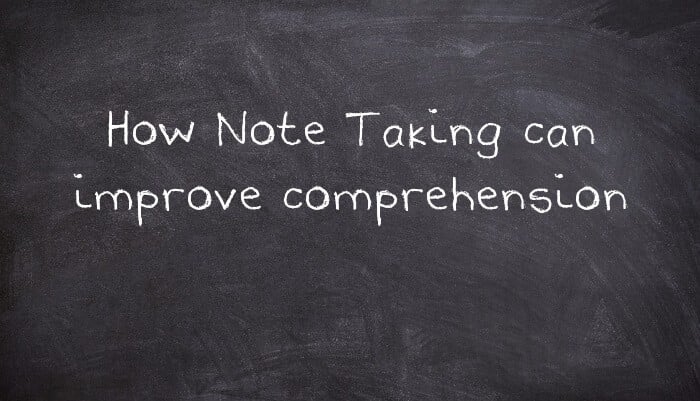How Note Taking can improve comprehension
Here are some examples of how note taking can improve comprehension:
- Identifying main ideas and supporting details: Note taking can help readers identify the main ideas and supporting details in a text. By writing down key points and phrases, readers can better understand the author's organizational pattern and the relationships between ideas.
- Recognizing relationships between ideas: Note taking can help readers recognize relationships between ideas, such as cause-and-effect, comparison, and contrast. This can aid in comprehension by helping readers understand how ideas are connected and how they contribute to the overall meaning of the text.
- Identifying key terms and concepts: Note taking can help readers identify key terms and concepts in a text, which can be especially helpful when reading technical or specialized material. By writing down unfamiliar words and their definitions, readers can improve their vocabulary and better understand the text.
- Recording questions and thoughts: Note taking can help readers record questions and thoughts that arise while reading. This can aid in comprehension by encouraging readers to engage with the material at a deeper level and think critically about the ideas presented.
- Summarizing and paraphrasing: Note taking can help readers summarize and paraphrase the material they are reading. By distilling the main ideas into their own words, readers can better understand the text and retain the information.
- Creating mental models: Note taking can help readers create mental models of the material they are reading. By visualizing the relationships between ideas and concepts, readers can better understand the text and remember it more effectively.
- Reviewing and reflecting: Note taking can help readers review and reflect on the material they have read. By reviewing their notes and thinking about the implications of the ideas presented, readers can deepen their understanding of the text and make connections to their own experiences and prior knowledge.
- Collaborating with others: Note taking can help readers collaborate with others who are also reading the same material. By sharing notes and discussing the text, readers can gain new insights and perspectives and improve their comprehension of the material.
- Creating a personal connection: Note taking can help readers create a personal connection to the material they are reading. By relating the ideas presented in the text to their own experiences and interests, readers can better understand and remember the information.
- Developing a deeper understanding: Note taking can help readers develop a deeper understanding of the material they are reading. By engaging with the text at a deeper level and thinking critically about the ideas presented, readers can gain a richer understanding of the material and make connections to their own experiences and prior knowledge.
Overall, note taking is a powerful tool for improving comprehension because it encourages readers to engage actively with the material, think critically about the ideas presented, and create personal connections to the information. By taking notes, readers can improve their understanding of the text and retain the information more effectively.
